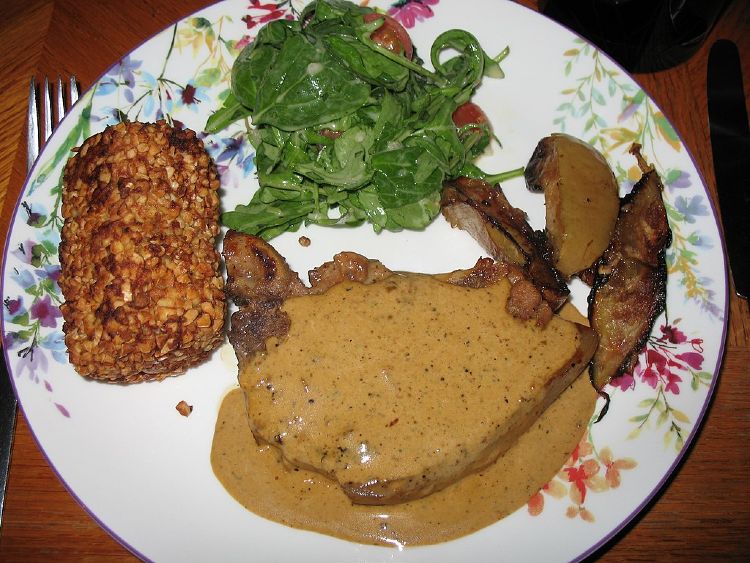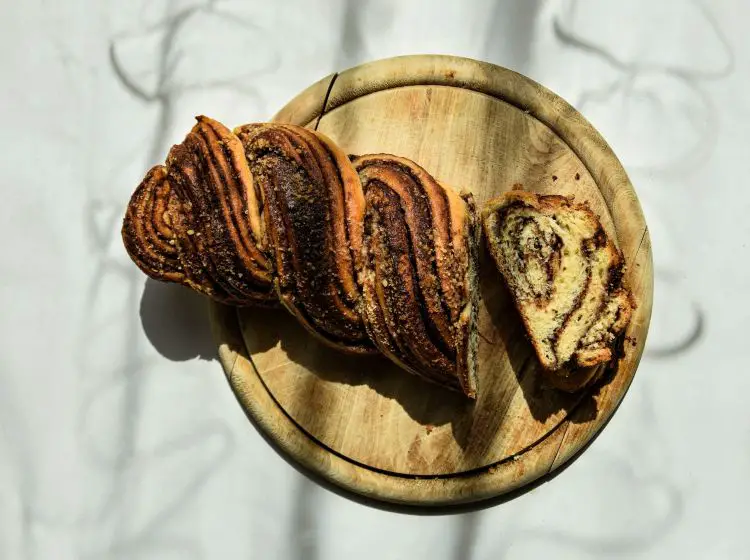Cooking Gorgeous Artisanal Kitchen Linens
At The Foodie Bugle we are always intrigued as to how people set up artisanal businesses. Where does the idea come from in the first place? How is a new entrepreneur inspired to enter a competitive market, filled with cheap imports? Henny Flynn, founder of Cooking Gorgeous in Cambridgeshire, tells us how messing about with a stock pot led to creating her own range of kitchen linens, all designed and made artisanally in England.
How I started Cooking Gorgeous – by Henny Flynn
When I left my job in the City I decided I was to make jam, grow my own vegetables and be the perfect mother. I quickly realised that all those years working in an office had meant that the urge inside of me to work for a living was just too strong. I decided that creating a soup making business was the way forward. I love soup, I make a delicious bowl of leek and potato, and I seem to spend a large amount of time making it for my own family anyway.
I soon came to the realisation, however, that our plans for blitzing the soup market were a bit thin. The market is pretty much saturated and there are many clever people out there already making delicious flavours, and, to be honest, in a taste test, I often preferred theirs.
We hadn’t chopped our way through a mountain of parsley and sage for nothing, however. Through all the blending and tasting came another realisation, and that was that most of the aprons, tea-towels and oven gloves we owned were of very poor quality indeed. And so, there was born the germ of an idea.
We decided to keep soup for lunch rather than business and create wonderful kitchen textiles instead, with good designs, with little innovations, aprons that fit and flatter, tea-towels that actually dry dishes, oven cloths that properly protect hands from heat. In short, products that look, feel and behave like they should.
The decision to make all the textiles artisanally in England was not taken lightly. We could save money and manufacture in China but with cheap imports decimating our British textile market it just seemed wrong to produce our range abroad. Britain has a very skilled textile workforce, so if we can help, in some small way, to support our floundering economy and reduce unecessary textile miles then that has got to be an important consideration too.
We started off testing out a few ideas on friends, foodies and focus groups. Honest feedback can be hard to take, and it was only when the third consecutive focus group gave our artful, witty washing line print the thumbs down that we decided perhaps we would not proceed with it after all.
Our inspiration comes from simplicity. There’s a part of me that loves antique floral designs but they are now ubiquitous and we wanted to keep things clean and simple, with a timeless quality that’s not determined by fashion or fads. We want our products to spend their lifetime happily in the kitchen, doing what they’re meant to do and not being ousted because the fashion is suddenly mustard this year.
Fabrics are natural. Colours are rich but not overpowering. Aprons are cut generously to fit and flatter. Waist ties are longer than average (to tie in front or behind). Women’s aprons are adjustable. Men’s pockets are tapered (a must for manly hands). And our little innovations help make kitchen life that little bit easier too. Things like our “Toggle On” – a handy kitchen cloth that hooks on your apron toggle, so it’s always where you need it.
My background is in marketing and communications so I knew how important it was to get the branding of the business right. The name, the tone of voice, the copy were all things I was comfortable with, but I come from the service industry and so I wanted to get support from experts who knew the retail market. I worked with a design agency, Out of House, to develop the brand, web and packaging and continue to work with them. I do the PR myself but am considering taking on a PR agency – partly because the challenge of doing everything yourself can leave you with no time for anything else, but also because it pays to work with experts in your particular field. We have also worked with a very talented young photographer, Charlotte Griffiths, on our photoshoots. The photography is critical as it has to make the products come alive and show their quality.
We mainly sell online but are now starting to fulfil trade orders after exhibiting at the Top Drawer trade show in January this year. These orders range from gift boutiques to fine food delicatessens to cafes and cookshops. We have also started producing commissioned aprons and accessories for independent cookery schools, farm shops and restaurants. All three of these markets are important to us and all the products we produce are made by our UK manufacturers. The next step is to expand the range, both in terms of using different fabrics and designs but also continuing to develop our kitchen innovations.The next step might be to launch our range in important British high-street stores.
So, one year on from making those first batches of soup, here I am with a small but beautiful range of kitchen textiles, and new lines already in development. The business consists of just me, a very supportive husband, an understanding 10-year old child and a job that demands attention 24-hours a day. You could say that not a great deal has changed since giving up corporate life, except for the location and the pay packet.
But, actually, a great deal has changed. I’m passionate about my new business, it is creative and demanding and rewarding. And I’ve come to realise that just because some of the things we do around the home might not be that glamorous, like washing up or peeling potatoes, wearing and using beautiful, artisanal things that work make the whole experience that little bit better.
If I had to advise anyone who is thinking of setting up a new business in the artisanal, homeware, or Made in Britain market, I would give them the following suggestions:
1. Research your market very carefully. It took us nine months to develop the initial range, including focus groups and many rejected designs.
2. Spend your money only on the things that matter, and that includes branding and packaging. My biggest single expense has been the branding work and the website but they are my shop front and they need to reflect the business and showcase the products.
3. Planning is critical and there are things I wish I’d thought about more before wading in – but learning from your mistakes is also important.
4. Know your audience. We produce a high-end product that will last and that you will love using every day – they’re not a piece of frippery to get bored with when fashion changes. The people who love our products know this and that’s why they buy from us.
Cooking Gorgeous website: www.cookinggorgeous.com


